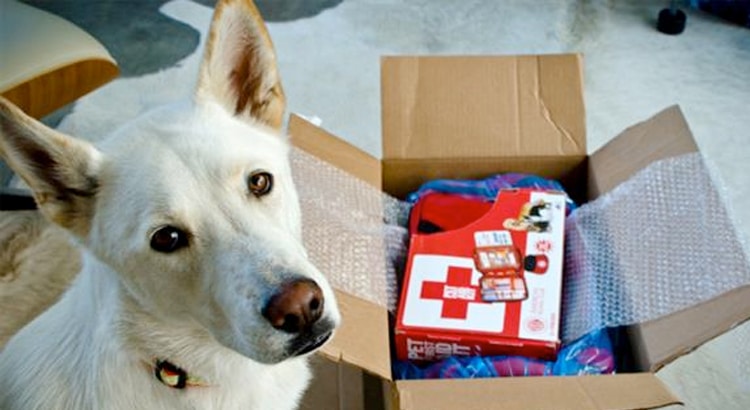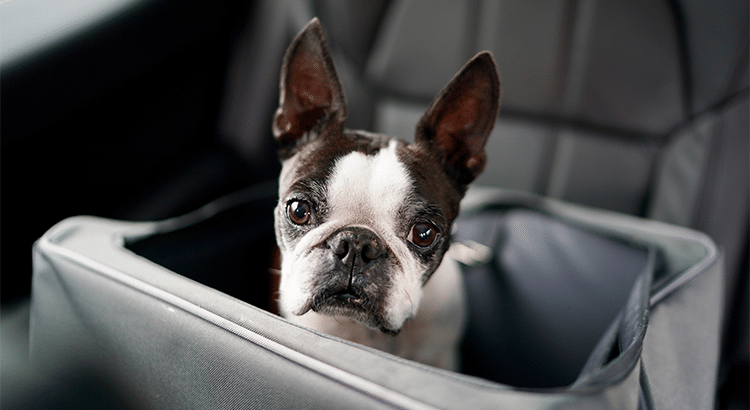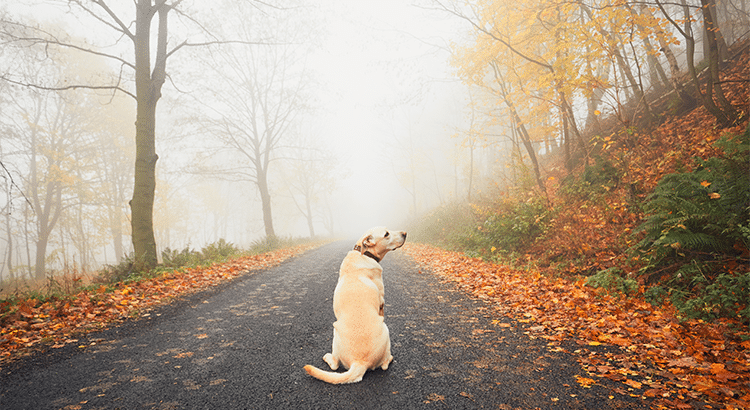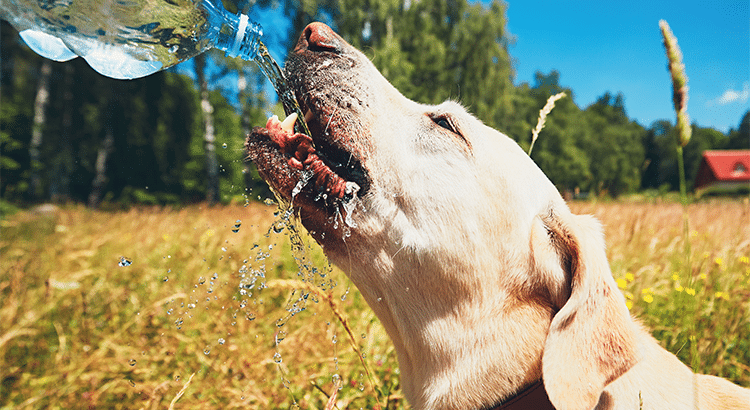
Disaster preparedness is important with hurricane season here and present. The official hurricane season for the Atlantic Basin is from June 1st to November 30th, with a peak season from mid-August to late October. During this time, those in the line of Hurricane Alley must remain on guard and be prepared to protect themselves as well as their pets.
An estimated 600,000 pets died or were left without shelter during Hurricane Katrina in 2005.
Therefore, it is crucial to explore pet safety tips to keep our vulnerable furry friends safe as well. Hurricane Katrina, Harvey, and Maria taught us the hard way that the safety of our animals must be made a priority. Making pet safety preparations ahead of time will help to avoid chaos and heartache in the aftermath.
- Make a plan. To remain ahead of the game, make a plan in the event you must evacuate. Within this plan, include evacuating with your pets. Make sure to have pet carriers if needed and that each pet has their Pin Paws tag in place with up-to-date pet profiles. Complete a few trial runs to ensure your plan will work.
- Get your pet survival kit together. Your pet will need food and water. If your pet eats canned food, don’t leave the can opener behind. It is recommended to take a 2-week supply of food and water for your pet, a first aid kit, pet bowls and leashes/harnesses, medications and toys/blankets/beds.
- Stay calm. As hard as it may sound to remain calm during a state of panic, it is important. Pets can sense our emotions by picking up on subtle scents such as adrenaline when we are fearful or anxious. Staying calm improves the likelihood of your plan being carried out successfully, increasing the survival rate for all.
- Evacuate to a pet-friendly shelter. At a shelter within your evacuation zone, it is important to provide proof of residency. Also, you must provide present medical and current vaccination records for each pet. This is where your Pin Paws tag comes in handy. You will be able to scan your pets tag and your pet’s stored records will be accessible. In an emergent state of panic, this feature will save you valuable time.
- Plan for your pet if you’re not home. It would be a terrifying feeling to be away from home during hurricane season and know that your home is in the direct line of a serious storm. Make a disaster preparedness plan well in advance with someone you trust to take your pets for you as well as your pets survival kit. This person should have a key and a plan in place for them to evacuate with your pets, or meet you.
What should be in a pet emergency kit? Absorbent gauze pads, adhesive tape, antiseptic wipes, blanket, cotton swabs, gauze roll, hydrogen peroxide, ice pack, non-latex disposable gloves, petroleum jelly, rectal thermometer, scissors, sterile non-stick gauze pads for bandages, sterile saline solution, and tweezers. The hassle of creating a pet emergency kit for hurricane season can be simplified by purchasing one that is pre-assembled.
For your family’s safety, keep all medical supplies and medications out of the reach of children and pets.
Table of content
Related articles

Disaster preparedness is important with hurricane season here and present. The official hurricane season for the Atlantic Basin is from June 1st to November 30th, with a peak season from mid-August to late October. During this time, those in the line of Hurricane Alley must remain on guard and be prepared to protect themselves as well as their pets.
An estimated 600,000 pets died or were left without shelter during Hurricane Katrina in 2005.
Therefore, it is crucial to explore pet safety tips to keep our vulnerable furry friends safe as well. Hurricane Katrina, Harvey, and Maria taught us the hard way that the safety of our animals must be made a priority. Making pet safety preparations ahead of time will help to avoid chaos and heartache in the aftermath.
- Make a plan. To remain ahead of the game, make a plan in the event you must evacuate. Within this plan, include evacuating with your pets. Make sure to have pet carriers if needed and that each pet has their Pin Paws tag in place with up-to-date pet profiles. Complete a few trial runs to ensure your plan will work.
- Get your pet survival kit together. Your pet will need food and water. If your pet eats canned food, don’t leave the can opener behind. It is recommended to take a 2-week supply of food and water for your pet, a first aid kit, pet bowls and leashes/harnesses, medications and toys/blankets/beds.
- Stay calm. As hard as it may sound to remain calm during a state of panic, it is important. Pets can sense our emotions by picking up on subtle scents such as adrenaline when we are fearful or anxious. Staying calm improves the likelihood of your plan being carried out successfully, increasing the survival rate for all.
- Evacuate to a pet-friendly shelter. At a shelter within your evacuation zone, it is important to provide proof of residency. Also, you must provide present medical and current vaccination records for each pet. This is where your Pin Paws tag comes in handy. You will be able to scan your pets tag and your pet’s stored records will be accessible. In an emergent state of panic, this feature will save you valuable time.
- Plan for your pet if you’re not home. It would be a terrifying feeling to be away from home during hurricane season and know that your home is in the direct line of a serious storm. Make a disaster preparedness plan well in advance with someone you trust to take your pets for you as well as your pets survival kit. This person should have a key and a plan in place for them to evacuate with your pets, or meet you.
What should be in a pet emergency kit? Absorbent gauze pads, adhesive tape, antiseptic wipes, blanket, cotton swabs, gauze roll, hydrogen peroxide, ice pack, non-latex disposable gloves, petroleum jelly, rectal thermometer, scissors, sterile non-stick gauze pads for bandages, sterile saline solution, and tweezers. The hassle of creating a pet emergency kit for hurricane season can be simplified by purchasing one that is pre-assembled.
For your family’s safety, keep all medical supplies and medications out of the reach of children and pets.

Disaster preparedness is important with hurricane season here and present. The official hurricane season for the Atlantic Basin is from June 1st to November 30th, with a peak season from mid-August to late October. During this time, those in the line of Hurricane Alley must remain on guard and be prepared to protect themselves as well as their pets.
An estimated 600,000 pets died or were left without shelter during Hurricane Katrina in 2005.
Therefore, it is crucial to explore pet safety tips to keep our vulnerable furry friends safe as well. Hurricane Katrina, Harvey, and Maria taught us the hard way that the safety of our animals must be made a priority. Making pet safety preparations ahead of time will help to avoid chaos and heartache in the aftermath.
- Make a plan. To remain ahead of the game, make a plan in the event you must evacuate. Within this plan, include evacuating with your pets. Make sure to have pet carriers if needed and that each pet has their Pin Paws tag in place with up-to-date pet profiles. Complete a few trial runs to ensure your plan will work.
- Get your pet survival kit together. Your pet will need food and water. If your pet eats canned food, don’t leave the can opener behind. It is recommended to take a 2-week supply of food and water for your pet, a first aid kit, pet bowls and leashes/harnesses, medications and toys/blankets/beds.
- Stay calm. As hard as it may sound to remain calm during a state of panic, it is important. Pets can sense our emotions by picking up on subtle scents such as adrenaline when we are fearful or anxious. Staying calm improves the likelihood of your plan being carried out successfully, increasing the survival rate for all.
- Evacuate to a pet-friendly shelter. At a shelter within your evacuation zone, it is important to provide proof of residency. Also, you must provide present medical and current vaccination records for each pet. This is where your Pin Paws tag comes in handy. You will be able to scan your pets tag and your pet’s stored records will be accessible. In an emergent state of panic, this feature will save you valuable time.
- Plan for your pet if you’re not home. It would be a terrifying feeling to be away from home during hurricane season and know that your home is in the direct line of a serious storm. Make a disaster preparedness plan well in advance with someone you trust to take your pets for you as well as your pets survival kit. This person should have a key and a plan in place for them to evacuate with your pets, or meet you.
What should be in a pet emergency kit? Absorbent gauze pads, adhesive tape, antiseptic wipes, blanket, cotton swabs, gauze roll, hydrogen peroxide, ice pack, non-latex disposable gloves, petroleum jelly, rectal thermometer, scissors, sterile non-stick gauze pads for bandages, sterile saline solution, and tweezers. The hassle of creating a pet emergency kit for hurricane season can be simplified by purchasing one that is pre-assembled.



